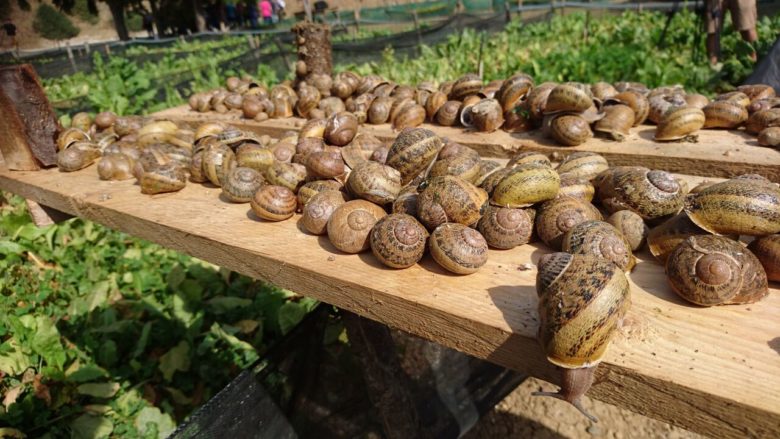Snail Farming in Nigeria: How to Start and Profit in 2025: Snail farming, also known as heliciculture, is one of the most overlooked but highly profitable agribusinesses in Nigeria. With increasing demand for organic and healthy protein sources, snails are fast becoming a delicacy in homes, hotels, restaurants, and export markets.
Stay organized as you grow. Use ProInvoice to manage billing and client relationships with ease.
In 2025, more Nigerians, especially youths and women, are turning to small-scale agriculture as a source of income. Among all the ventures, snail farming stands out due to its low startup cost, minimal space requirements, and high returns on investment.
If you’re interested in launching a sustainable, low-risk farming business, this comprehensive guide will walk you through the benefits, setup process, costs, and profitability of snail farming in Nigeria.
💡 Whether you’re supplying supermarkets, hotels, or individuals, ensure your snail farm is professionally run by using ProInvoice to create and send clean, branded invoices to your customers.
1. Why Snail Farming is a Smart Business in Nigeria
Nigeria has a huge appetite for snail meat, commonly known as “congo meat.” However, due to overharvesting from the wild and limited commercial farms, local supply still falls short of demand.
Here’s why snail farming is a great opportunity:
- Low capital requirement – Start with as little as ₦50,000
- High market demand – Both local consumption and export potential
- Low risk of disease – Compared to poultry or fish
- Space-saving – You can farm in your backyard
- Sustainability – Snails are eco-friendly and reproduce fast
2. Best Snail Species for Farming in Nigeria
There are several species of edible snails, but only a few are suitable for commercial farming. The top species recommended for farming in Nigeria include:
a. Archachatina marginata
Also known as the giant African land snail, this species is preferred for its size, high meat yield, and resilience.
b. Achatina achatina
This is a fast-growing species known for laying a large number of eggs. It’s popular in both West Africa and export markets.
c. Achatina fulica
Smaller and less meaty than others, but still useful for short-term farming and sales.
🐌 Tip: Start with 50–100 Archachatina marginata snails. They are easy to handle and widely accepted in Nigerian markets.
Click to download the Proinvoice mobile app now to manage your invoices anytime, anywhere with ease!
3. How to Set Up a Snail Farm in Nigeria
Step 1: Choose a Good Location
Snails thrive in a cool, shaded, and moist environment. Avoid dry, windy, or sunny spots. If outdoors, plant leafy vegetables or use netting to reduce sunlight exposure.
Step 2: Build a Snail House (Snailery)
Depending on your budget and space, snail pens can be:
- Old tires stacked and covered
- Wooden boxes or cages
- Concrete pens
- Trench pens with netting
Your snailery must:
- Prevent escape (snails are great climbers)
- Be protected from predators like ants and rats
- Be well-ventilated and easy to clean
Step 3: Source Quality Breeders
Buy healthy, mature snails from trusted farms or breeders. Each healthy snail can lay 80–300 eggs per year.
Start with at least 50–100 snails, depending on your budget and scale.
Step 4: Feed and Care for Snails
Snails are herbivores and eat mostly vegetables and fruits. Their favorite meals include:
- Pawpaw and pumpkin leaves
- Waterleaf and lettuce
- Cucumber and watermelon
- Ripe banana and plantain peels
- Carrot and cassava peels
Provide clean water and sprinkle the pens regularly to keep the environment moist.
Step 5: Egg Laying and Hatching
Snails bury their eggs in soft soil or compost. Eggs hatch after 21–35 days depending on temperature and humidity.
Transfer hatched baby snails into a nursery pen and feed them with soft vegetables until they mature.
4. Cost of Starting a Small Snail Farm in Nigeria (2025 Estimate)
Here’s a sample budget to start a small-scale snail farm with 100 snails:
| Item | Estimated Cost (₦) |
|---|---|
| Breeding snails (100 pcs) | 30,000 – 50,000 |
| Pen construction materials | 20,000 – 30,000 |
| Water and feeding containers | 5,000 |
| Feeding for 2 months | 10,000 |
| Miscellaneous (transport, tools) | 5,000 |
| Total | ₦70,000 – ₦100,000 |
✅ When supplying to customers, restaurants, or businesses, issue a proper receipt using this Free Invoice Generator.
5. Profitability of Snail Farming
Let’s do some simple math:
- One snail lays 80–300 eggs per year
- Starting with 100 snails → ~8,000–30,000 baby snails in a year
- Sell mature snails at ₦300–₦800 each
- Even with 1,000 sales/year at ₦500 = ₦500,000 gross revenue
With proper care, you could double your investment in under 12 months. The key to profitability lies in expansion, consistent feeding, and building reliable buyers.
6. Where to Sell Your Snails
Snails have diverse markets. Here’s where to sell:
- Open markets (especially in southern Nigeria)
- Hotels and restaurants
- Frozen food distributors
- Export traders
- Online platforms like Facebook, Instagram, and WhatsApp
- Agro-processing companies
To build customer trust, always invoice bulk buyers professionally. You can use this free professional invoice templateto look credible and organized.
7. Common Mistakes to Avoid in Snail Farming
- Overcrowding your snails – leads to slow growth and disease
- Dry environment – snails become inactive and stop eating
- Using hard or sandy soil – eggs won’t hatch properly
- Overfeeding or spoiling food – may attract flies and bacteria
- Skipping records – tracking feeding, egg laying, or sales is key
If you plan to sell commercially, it’s also essential to keep track of client invoices and delivery records using tools like ProInvoice.
Conclusion
Snail farming is more than a side hustle—it’s a scalable and sustainable agribusiness opportunity in Nigeria. With minimal startup capital and the right setup, you can turn your backyard into a profitable snail farm within a few months.
As you grow, take your business seriously. From handling payments to building customer trust, use ProInvoice to send clean, branded invoices for free. It’s the perfect tool for agribusiness owners, consultants, and service providers who want to run a professional operation.















